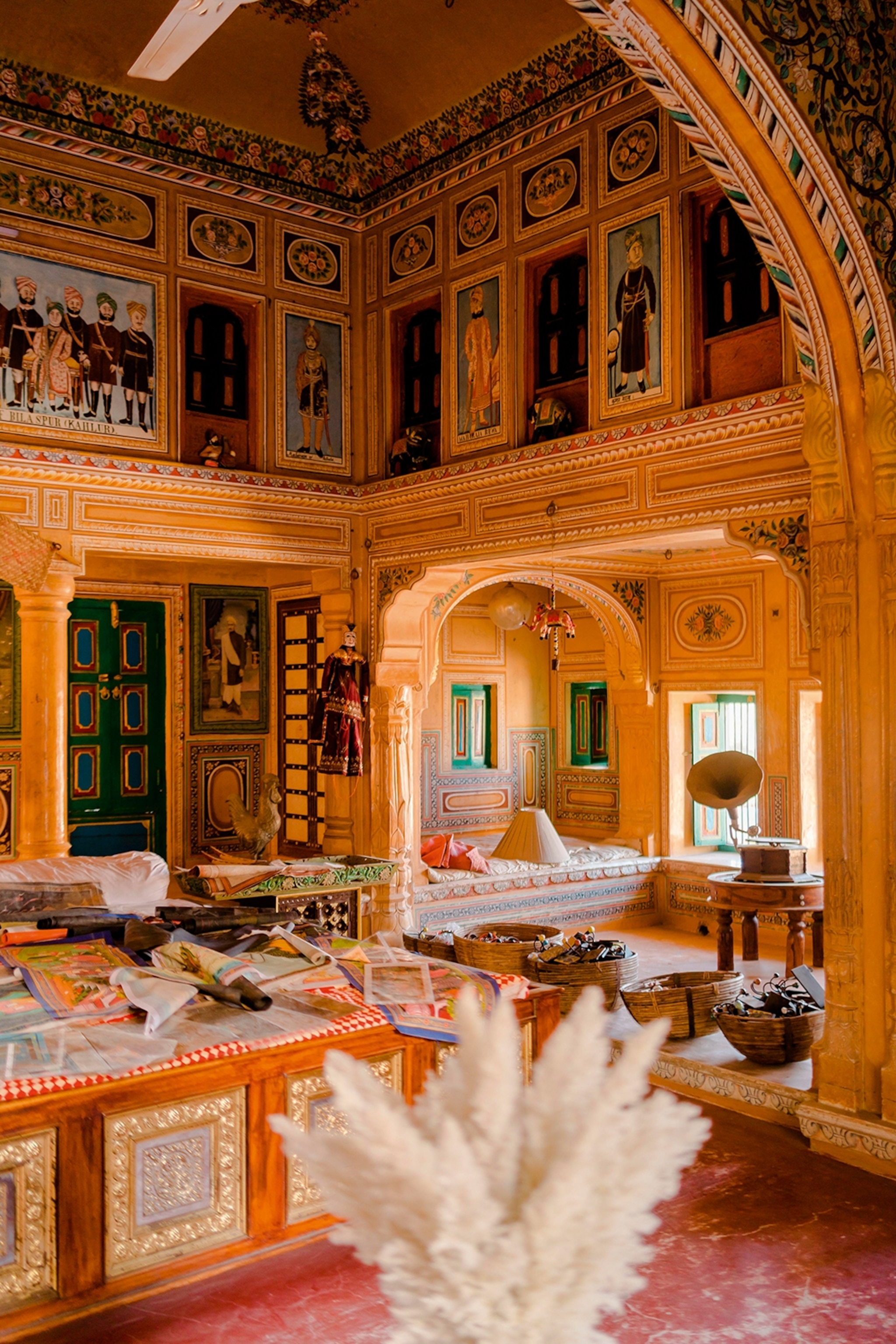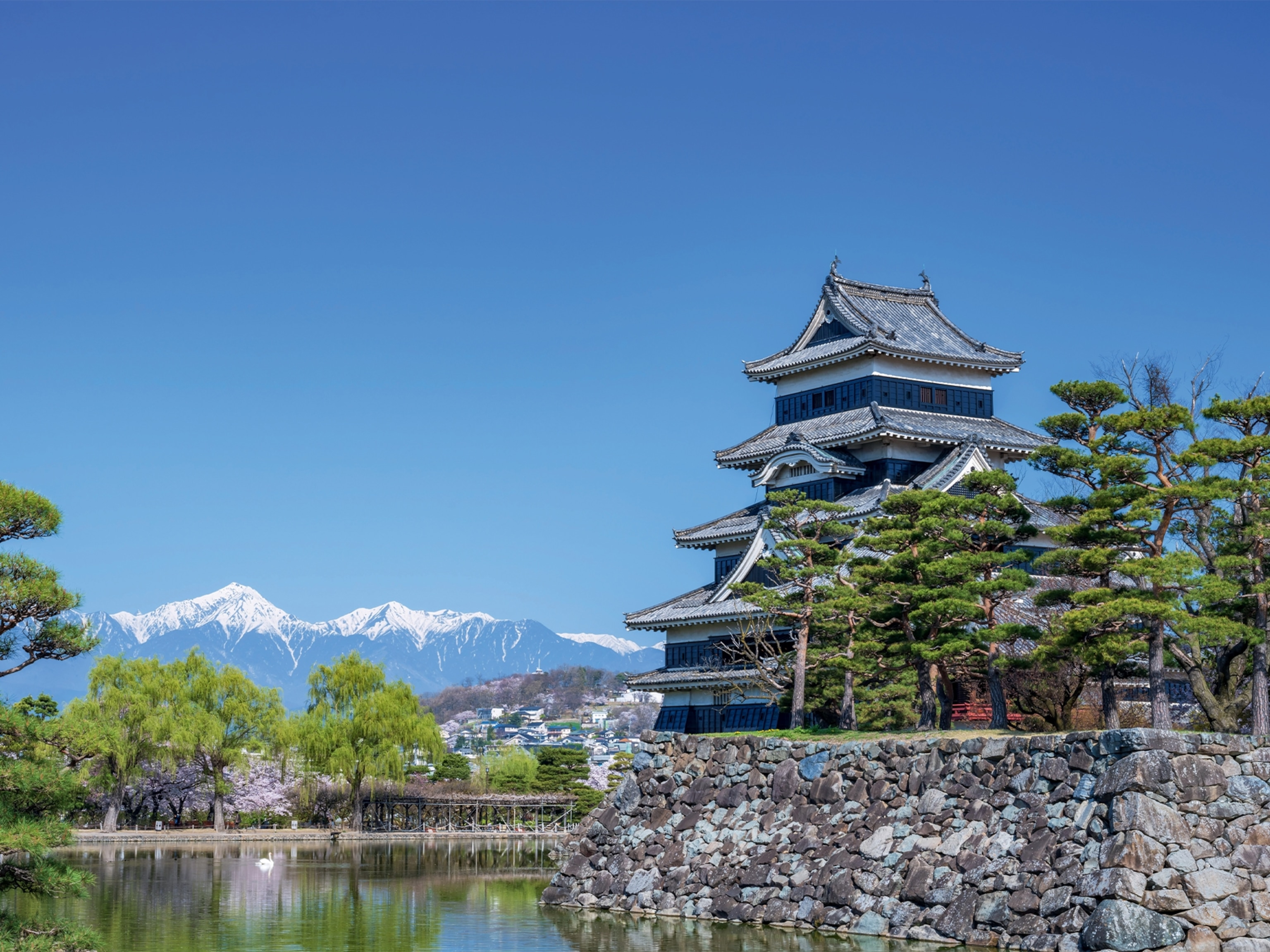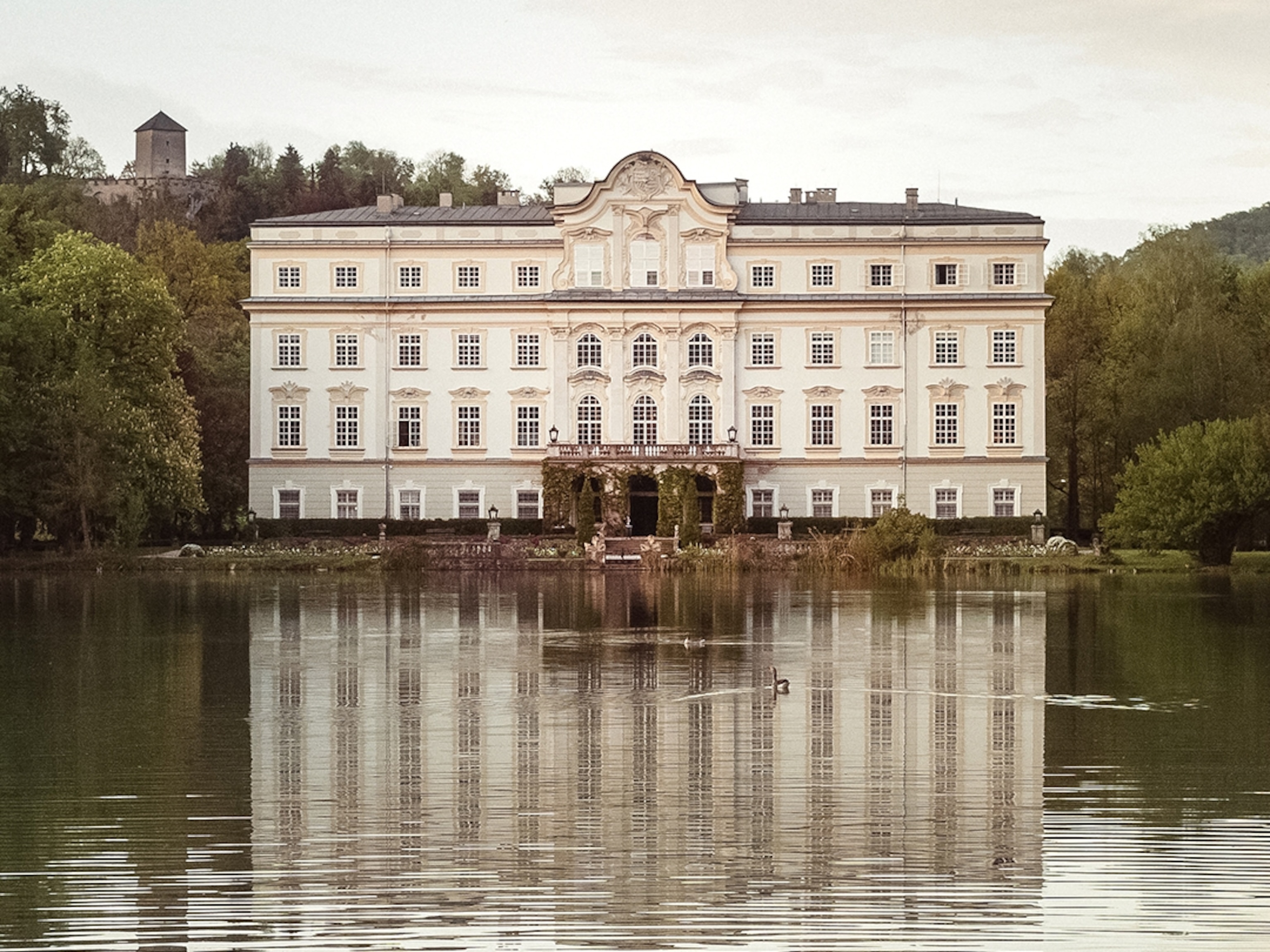
Is this fresco-filled town Rajasthan's next big destination?
In a sleepy corner of Rajasthan, local artists are restoring the region’s crumbling haveli mansions to their former frescoed splendour.
The morning fog drifts through the streets of the village of Mandawa, engulfing the yellow and cream walls of the town’s now crumbling mansions. It’s early in northeast Rajasthan and camel carts laden with leafy vegetables are sidling along unpaved roads, while men with curled moustaches take up their places in cubby-hole stores selling general provisions, alongside shops full of red-and-gold fabrics and dusty antiques. Within minutes the fog clears, burned away by the rising sun.
Steam is starting to rise from the silver pots outside the village tea shop — its customers huddled together on nearby steps. Above them, on the clay walls, are murals of steam trains, depicted in pink and red, sitting beside scenes of a former noble court. I stop to examine the paintings and the tea shop salesman, young and smiley, beckons. He hands me a cup filled with sugary milk tea. “Welcome to Mandawa,” he says, waving away my rupees.
Around 100 miles north of Jaipur, Mandawa sits in the Shekhawati region of Rajasthan, a rural district of small, historic towns. Shekhawati is famous for its grand havelis — traditional Indian mansions — that are covered with a distinct style of fresco. These paintings depict the meeting of many worlds — of local Rajput chieftains, Mughal rulers, Hindu deities and Englishmen of the British Empire.
Shekhawati once sat on a historic trading route, linking the seaports of Gujarat to the south west with the Golden Triangle cities of Delhi, Agra and Jaipur. Low taxes brought camel caravans through the region, with merchants typically trading sugar, salt, opium, cotton and spices.
Financed by the growing wealth from commerce, more elaborate building work started in the early nineteenth century, resulting in the havelis. But the construction of railways, and increased use of river transport under British rule, diverted trade away from Shekhawati a few decades later, leading to the havelis being abandoned.
Today, Mandawa is a lesser-known addition to the Golden Triangle circuit, its calm streets providing a laid-back sojourn from hectic cities. Recently, a number of its havelis have been restored, and rising demand is encouraging more.
I’m staying at the Hotel Radhika, a restored haveli where the sturdy teak doors of the rooms open onto an inner courtyard with stained glass windows. It’s here that I meet my guide Sikander Khan, who’s taking me on a walking tour around Mandawa’s havelis. We pass several small ones still lived in by families. Children dash around their mothers, who are dressed in orange saris.
Soon we reach Gulab Rai Ladia Haveli, a mansion dating from 1870 that’s famous for its paintings depicting the life of wealthy merchant Gulab Raiji. The grandness of this haveli is evident as we enter the outer courtyard. “These pieces of mirror came from Belgium, they were traded for spices,” Sikander explains, pointing to the small segments of glass that decorate the domed archway of the front door.
On the door’s right side is a half-painted elephant, carrying several lords in armour. “In every haveli, on the left and right of the door, you see elephants — our symbol of prosperity,” Sikander tells me. This elephant is unfinished, he explains, because the haveli is currently being restored and turned into a hotel. Today, the workers are on holiday, their tins of paint scattered beneath half-finished frescoes.
Initially, wealthy merchants brought painters from nearby Jaipur to decorate their homes. In Jaipur, artists from Persia had mingled with those of Delhi’s Mughal court to produce Rajasthan’s distinctive artistic style — detailed folk art of bold lines and bright colours. An intriguing element of Shekhawati’s art is the juxtaposition of foreigners alongside traditional Rajasthani scenes. From Gulab Rai Ladia we stroll to Mandawa’s main street and the local branch of the State Bank of India, also housed in a haveli. One wall shows an Englishman in jodhpurs, holding a boxy telephone.
The conditions of the havelis vary: some are immaculate hotels; others, such as Goenka Double, are believed to be haunted and have been left to nature. Many are open to visitors, still strewn with the old owners’ possessions.
Behind Gulab Rai Ladia, I find a man painting the outline of a turbaned warrior onto a wall. This is Mohan Lal Saraf Haveli, the former home of textile traders. “When I bought the haveli it was in a disastrous state,” explains its local owner, Vishal Joshi. He shows me into a room where business would have been conducted. “The caretaker used to cook here, so these walls were black. We had to use caustic soda to clean the soot,” he continues.
“By doing that, some of the paintings were washed away,” he says. However, like those first merchants, Vishal brought in artists from Jaipur, where there’s still a large painting community. “I want to reproduce the old,” he says. “At first, I wanted to build a lucrative business; now, thanks to these artworks, preservation has become my priority.”
Where to stay
To subscribe to National Geographic Traveller (UK) magazine click here. (Available in select countries only).





